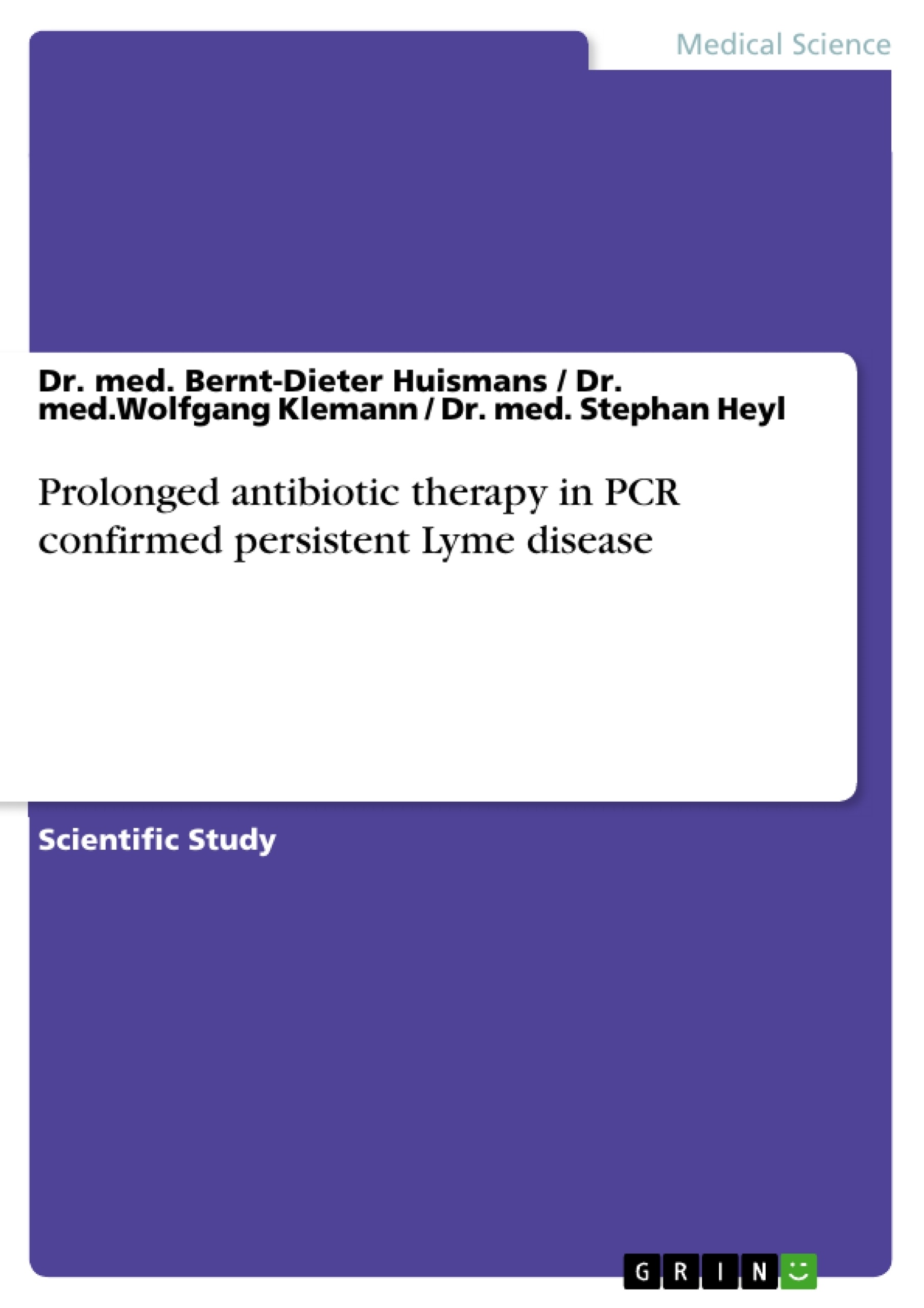We examined a sample of 90 individuals that had previously received a course of appropriate antibiotics for Lyme disease without experiencing full resolution of their symptoms and had evidence of persistent infection documented by PCR analysis.
Mean duration of symptoms was 9.5 years (range 1 - 40 years). The treatment was adapted to the individual case according to clinical response. Long term antibiotic therapy was initiated and patients were treated continuously for at least 6 months, in some cases several years of intermittent therapy was administered. About 38,8% of the patients experienced full remission of symptoms while about 56,7% reported a significant improvement, 5,6% of patients were deemed refractory to therapy. Therapeutic modalities are discussed in detail.
Inhaltsverzeichnis (Table of Contents)
- Abstract
- Key words
- Key issues
- Introduction
- Patients
- Detection of borrelial DNA in skin biopsies
Zielsetzung und Themenschwerpunkte (Objectives and Key Themes)
This study examines a sample of 90 patients diagnosed with persistent Lyme disease, defined by unresolved symptoms despite previous antibiotic treatment and confirmed presence of Borrelia DNA via PCR. The paper investigates the efficacy of long-term antibiotic therapy in these patients, exploring the clinical course, treatment modalities, and potential challenges associated with this complex disease.
- Effectiveness of prolonged antibiotic therapy for persistent Lyme disease
- Clinical presentation and diagnostic challenges in late-stage Lyme disease
- Role of Borrelia PCR in diagnosis and treatment decisions
- Prevalence and impact of co-infections in Lyme disease patients
- Limitations of serological testing in late-stage Lyme disease
Zusammenfassung der Kapitel (Chapter Summaries)
- Abstract: This section presents a concise overview of the study, highlighting the inclusion criteria, key findings related to the effectiveness of long-term antibiotic therapy, and the prevalence of co-infections.
- Introduction: This chapter provides background information on Lyme disease, its history, and the current state of knowledge regarding its treatment. It also discusses the limitations of existing treatment guidelines and highlights the need for further research on the management of persistent Lyme disease.
- Patients: This chapter details the characteristics of the study population, including demographics, symptom presentation, and diagnostic methods used to confirm the presence of Lyme disease. It also discusses the prevalence of co-infections and their potential impact on treatment outcomes.
- Detection of borrelial DNA in skin biopsies: This section focuses on the specific methodology used to detect Borrelia DNA in skin biopsies, providing insights into the reliability and sensitivity of the PCR method in diagnosing Lyme disease.
Schlüsselwörter (Keywords)
The primary focus of this study revolves around the complexities of persistent Lyme disease, emphasizing the importance of Borrelia PCR in diagnosis, the limitations of serological testing, the effectiveness of long-term antibiotic therapy, and the potential role of co-infections in clinical presentation and treatment outcomes.
- Citation du texte
- Dr. med. Bernt-Dieter Huismans (Auteur), Dr. med.Wolfgang Klemann (Auteur), Dr. med. Stephan Heyl (Auteur), 2011, Prolonged antibiotic therapy in PCR confirmed persistent Lyme disease, Munich, GRIN Verlag, https://www.grin.com/document/166179



